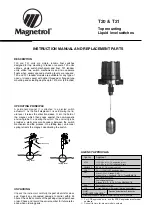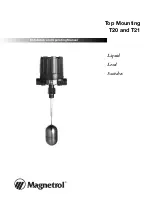
RUGGEDCOM RSG2488
User Guide
Chapter 5
Setup and Configuration
eRSTP
125
Section 5.2.1.6
eRSTP
RuggedCom's enhanced Rapid Spanning Tree Protocol (eRSTP) improves the performance of RSTP in two
ways:
• Improves the fault recovery time performance (< 5 ms per hop)
• Improves performance for large ring network topologies (up to 80 switches)
eRSTP is also compatibile with standard RSTP for interoperability with commercial switches.
For example, in a network comprised of 15 RuggedCom hardened Ethernet switch in a ring topology, the
expected fault recovery time would be less than 75 ms (i.e. 5 ms x 15). However, with eRSTP, the worst case
fault recovery time is less than 26 ms.
Section 5.2.1.7
Fast Root Failover
RuggedCom’s
Fast Root Failover
feature is an enhancement to RSTP that may be enabled or disabled. Fast
Root Failover improves upon RSTP’s handling of root bridge failures in mesh-connected networks, trading slightly
increased failover times for a deterministic recovery time.
Two Fast Root Failover algorithms are available:
•
Robust:
guarantees a deterministic root failover time, but requires support from all switches in the network,
including the root switch
•
Relaxed:
ensures a deterministic root failover time in most network configurations, but allows the use of a
standard bridge in the root role
NOTE
To use RSTP Fast Root Failover, all switches in the network must be RuggedCom switches and
must have the same Fast Root Failover algorithm enabled. In networks mixing RuggedCom and non-
RuggedCom switches, or in those mixing Fast Root Failover algorithms, RSTP Fast Root Failover will
not function properly and root bridge failure will result in an unpredictable failover time.
Fast Root Failover and RSTP Performance
• Running RSTP with Fast Root Failover disabled has no impact on RSTP performance.
• Fast Root Failover has no effect on RSTP performance in the case of failures that do not involve the root bridge
or one of its links.
• The extra processing introduced by Fast Root Failover significantly decreases the worst-case failover time
in mesh networks, with a modest increase in the best-case failover time. The effect on failover time in ring-
connected networks, however, is only to increase it.
Recommendations On the Use of Fast Root Failover
• It is not recommended to enable Fast Root Failover in single ring network topologies
• It is strongly recommended to always connect the root bridge to each of its neighbor bridges using more than
one link
















































